The type specimen of a species is the particular fossil to which the species name was first applied. The following table lists the type specimens of all the hominin species which have a wide acceptance by the Paleoanthropology community. It indicates the name of the species, the fossil record number, and the date & location of the specimen discovery.
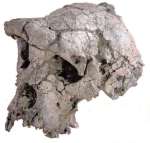 |
Sahelanthropus tchadensis
TM 266-01-060-1 (Jul 19 2001, Toros-Manalla 266, Chad) |
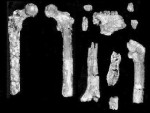 |
Orrorin tugenensis
BAR 1000’00 (Oct 25 2000, Tugen Hill, Kenya) |
 |
Ardipithecus kadabba
ALA-VP-2/10 (Jul 12 2001, Asa Koma, Middle Awash Valley, Ethiopia) |
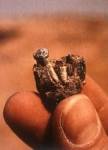 |
Ardipithecus ramidus
ARA-VP-6/1 (Dec 17 1992, Aramis, Ethiopia) * Photo: mandible fragment with deciduous lower first molar ARA-VP-1/129. An associated set of 10 adult teeth was chosen for the holotype. |
 |
Australopithecus anamensis
KNM-KP-29281 (Sep 10 1994, Kanapoi, Kenya) |
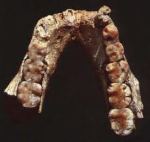 |
Australopithecus afarensis
LH-4 (1974, Laetoli, Tanzania) |
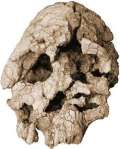 |
Kenyanthropus platyops
KNM-WT-40000 (Aug 1999, Lomekwi, Kenya) |
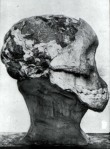 |
Australopithecus africanus
Taung-1 (Nov 28 1924, Taung, South Africa) |
 |
Paranthropus aethiopicus
Omo-18 (1967, West of Omo River, Ethiopia) |
 |
Australopithecus garhi
BOU-VP-12/130 (Nov 20 1997, Bouri, Ethiopia) |
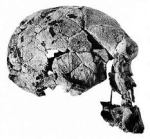 |
Homo rudolfensis
KNM-ER-1470 (Aug 1972, Koobi Fora, Kenya) |
 |
Paranthropus boisei
OH-5 (Jul 17 1959, Olduvai Gorge, Tanzania) |
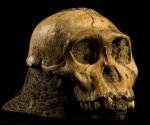 |
Australopithecus sediba
MH-1 (Aug 15 2008, Malapa, South Africa) |
 |
Homo habilis
OH-7 (Nov 4 1960, Olduvai Gorge, Tanzania) |
 |
Paranthropus robustus
TM-1517 (Jun 8 1938, Kromdraai, South Africa) |
 |
Homo ergaster
KNM-ER-992 (1971, Koobi Fora, Kenya) |
 |
Homo erectus
Trinil-2 (Oct 1891, Trinil, Java, Indonesia) |
 |
Homo antecessor
ATD 6-5 (Jul 8 1994, Atapuerca, Spain) |
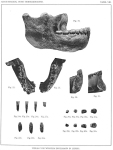 |
Homo heidelbergensis
Mauer-1 (Oct 20 1907, Mauer, Germany) |
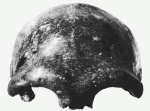 |
Homo neanderthalensis
Neandertal-1 (Aug 1856, Feldhofer grotto, Germany) |
 |
Homo floresiensis
LB-1 (Sep 6 2003, Liang Bua, Flores, Indonesia) |
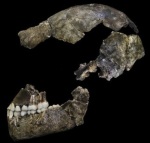 |
Homo naledi
Dinaledi Hominin 1 (March 2014, Rising Star, South Africa) |
 |
Homo sapiens
N/A, but… David Notton and Chris Stringer propose that the type specimen of Homo sapiens is Carl Linnaeus (1707-1778) |

This is awesome — but you are missing some species that are often (but not always) considered junior synonyms or nomina dubia. There’s a more complete list here (although I think they are missing a few, too): http://www.talkorigins.org/faqs/homs/typespec.html
Me gustaMe gusta
Oh, I see: «all the hominin species which have a wide acceptance.» Well, a few of those aren’t too rare (like Homo rhodesiensis), but….
Me gustaLe gusta a 1 persona
Good point Mike. Homo rhodesiensis was precisely a species I didn’t see clear whether to include it or not in this list – Actually, I consider this species will have more importance as Homo heidelbergensis will be more precisely defined. I wrote about it here in English («Meet Bodo and Herto») http://wp.me/p4Bi9E-mT and here in Spanish («¿La extinción de Homo heidelbergensis?») http://wp.me/p4Bi9E-5P Thanks for your comments. Probably in the next days I will consider its inclusion here 😉
Me gustaLe gusta a 1 persona
Just noticed the Ardipithecus ramidus picture is of ARA-VP-6/500 («Ardi»), not ARA-VP-6/1.
Me gustaMe gusta
You are right. Now updated. Thanks!
Me gustaLe gusta a 1 persona
Nice collection of information and evidence for human evolution. I would add the age of the specimens, which is of great value for people who don’t investigate further. As we know, it allows readers without paleoanthropological knowledge to understand the temporal position of these discoveries. Also, it should be mention here that other fossil specimens of some, if not most of these species do exist, and even more are now being discovered, making the validity of the data still more powerful. Thank you for putting this list together. It shows, in my opinion, the invaluable work of the so many field workers, who find the fossils, and who determine their biological and geological context.
Me gustaMe gusta
Hi Alfonso, I appreciate your comments. I like the suggestion about adding the age and will try to do it soon. About adding more specimens, I think this would make the list too crowded with data, but it is a good idea for a separate post. Thanks!
Me gustaMe gusta
Good job! please include citation which is important to get more information especially people from non paleoanthropology background.
Me gustaMe gusta
Ok. Thanks!
Me gustaMe gusta
Pingback: 3 hominins found on October 21st – Nutcracker Man